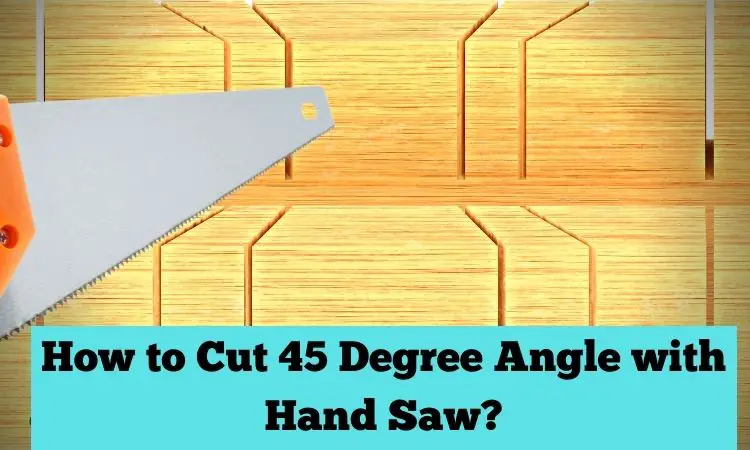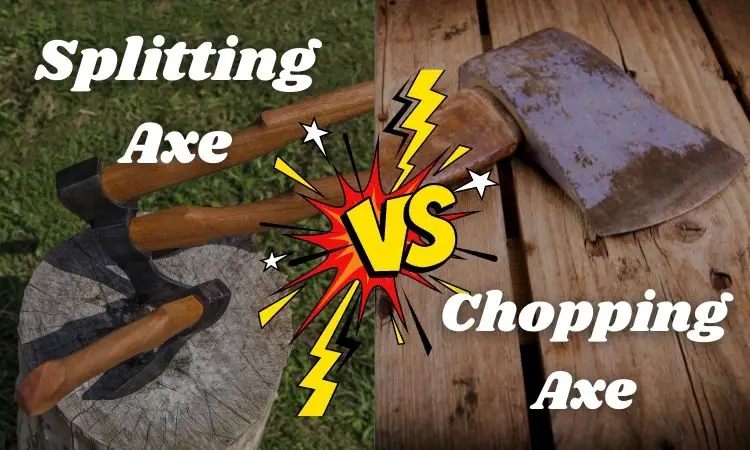As like other types of the handsaw, one of the main purposes of using a crosscut handsaw is to make cuts in wood. The main difference between a crosscut saw and other types of handsaws is the orientation of the blade.
While a traditional hand saw has teeth that point away from the handle, a crosscut saw has teeth that are angled towards the handle. This makes it ideal for cutting across the grain of wood, rather than with the grain.
Crosscut hand saws are also sometimes referred to as carpenter's saws. They are a type of tool that has been used by carpenters for centuries and are still in use today.
Why Crosscut Handsaw ?
The main reason to use a crosscut saw is for the accuracy that it provides. When cutting with the grain of the wood, it is easy to end up with a wavy or uneven edge. However, when cutting across the grain, the blade of the saw is able to create a much smoother and straighter cut.
This is why crosscut saws are often used for cutting molding and trim, as well as for making precise cuts in hardwoods. In any kind of log cutting to woodworking project some good hand saw will definitely increase your working speed.
In addition to the improved accuracy, crosscut saws also tend to be much more durable than traditional handsaws. This is because the teeth on the blade are angled in such a way that they are less likely to become damaged or broken.
If you are looking for a saw that can provide you with accurate and precise cuts, then a crosscut handsaw is a good option to consider.
How Crosscut Saws Cut?
Though the teeth on a crosscut handsaw are angled towards the handle, the blade is still able to cut in both directions. When cutting with the grain of the wood, the teeth will actually grip onto the wood and pull the saw blade through.
When cutting against the grain, however, the teeth will work like a chisel and chip away at the wood. This is why it is important to make sure that the teeth on the blade are sharp, as dull teeth will not cut as well and can actually damage the wood.
#Step-One: Getting the Right Crosscut Handsaw
When shopping for a crosscut handsaw, it is important to consider the size of the blade. The length of the blade will determine how deep of a cut you are able to make. For most general woodworking projects, a saw with a blade that is between 14 and 20 inches long will be sufficient.
You will also want to consider the thickness of the blade. Thicker blades are less likely to bend or break, but they can be more difficult to control. A thinner blade will be easier to control but is more likely to break if it hits a knot or other hard object in the wood.
In terms of the teeth on the blade, there are two main types of crosscut saws – those with rip teeth and those with crosscut teeth. Rip teeth are designed for cutting with the grain of the wood, while crosscut teeth are designed for cutting across the grain.
The TPI is also an important consideration. This stands for “teeth per inch” and it indicates how many teeth there are on the blade. The higher the TPI, the finer the cut will be. For most projects, a TPI of around 14 or 16 will be sufficient.
#Step-Two: Preparing the Wood
Before you begin cutting, it is important to measure and mark the wood so that you know where to make your cuts. It is also a good idea to use a piece of scrap wood to test the saw on before cutting into the piece that you are actually working on.
This will help to ensure that you are comfortable with the saw and that you know how it will cut through the wood.
Once you have marked the wood and tested the saw, you are ready to begin cutting. Be sure to hold the saw firmly with both hands and apply gentle pressure as you move it back and forth.
Do not try to force the blade through the wood, as this can damage both the saw and the wood.
If you are having difficulty cutting through the wood, you can try changing the angle of the blade or using a different type of saw.
#Step-Three: Cutting the Wood
When cutting the wood, be sure to follow the line that you have marked. If you need to make curves or other intricate cuts, you may need to use a different type of saw.
Now start cutting from the other side of the board. Again, use a straightedge to make sure your cut is perpendicular to the edge of the board. If your saw has a rip fence, you can use it to guide your cut.
If not, just be extra careful to keep the saw blade lined up with the mark. Cut all the way through the board and then repeat the process on the other piece of wood.
What To do Cut Faster With Crosscut handsaw?
We've seen from many carpenters that the primary reason for not using handsaws is the slow cutting speed. Handsaw or hacksaw whatever it is the cutting process is depending on its owner orientation. If you're one of those carpenters, here are some tips on how you can make crosscuts faster with your handsaw:
1) Use a rip fence
A rip fence is a guide that attaches to the blade of your saw and helps you make straighter, more accurate cuts. It also allows you to cut faster because you don't have to be as careful about keeping the saw blade lined up with your mark.
2)Use a sharp blade -
A sharp blade will cut through the wood more easily and quickly than a dull one. Be sure to keep your blades sharpened and replace them when they start to get dull.
3) Frequent Watering on Woods-
When you water the wood before cutting, it tends to swell a little and becomes softer. As a result, the blade of your saw can cut through it more easily.
4) Use a different type of saw -
If you're having trouble making fast cuts with your handsaw, try using a different type of saw. A circular saw or reciprocating saw will usually make faster cuts than a handsaw.
5) Practice -
The more you use your handsaw, the better you'll get at it and the faster you'll be able to make cuts. So practice whenever you can and soon you'll be making fast, accurate cuts like a pro.
Conclusion:
Though crosscut handsaw are tends to be slower than other types of saws, but with some practice and tips, you can make fast, accurate cuts like a pro. If you're still in confusion about the usage of handsaws, please feel free to ask any professionals and they will be more than happy to help you out.

I am a graduate of Bangladesh Agricultural University, where I delved into various agricultural disciplines, equipping me with a profound understanding of agriculture. Beyond academics, I have hands-on experience in gardening and crop cultivation. My passion is to embrace sustainable farming and horticulture. With a BSc in Agriculture, I am dedicated to promoting environmentally conscious and efficient agrarian practices.
Bachelor of Science (BSc) in Agriculture (Hons.)
Master of Science. (Sustainable Agriculture & Food Security ) (MS)
Bangladesh Agricultural University




